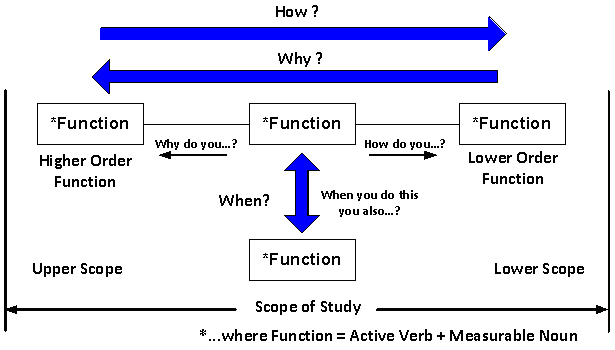
Although a mind therapy app sounds great, there are some things you need to know before you buy. Although a mind therapy app can help with anxiety and depression, it cannot replace traditional therapies. While some apps are free, others cost money. Here are some good reasons to get a mental app. We'll be looking at some of the most popular and explain how they can benefit you.
MindDoc – This app was created by psychologists to assist people suffering from mild to moderate mental illness. It allows users to track their moods on a daily basis and offers courses on topics including mindfulness and self-confidence. The mind therapy app should not be used as a substitute for counseling. It should only be used in conjunction with your therapy sessions. This app can help you manage anxiety but is not meant to replace professional therapy.

Mindfulness First Aid - This app has been approved by the NHS and was created by top mental health professionals. It has tools to promote happiness, well-being and includes a daily mood tracker as well as learning modules for anxiety. You can use a mind-therapy app on the go to keep track of your moods or understand the causes of your anxiety. Headspace premium also includes meditation courses. It costs $95 per calendar year.
Take a deep breath, slow down and think - This app features guided meditations and other exercises created by mental health specialists. It helps you practice these exercises when you're stressed out or anxious. It also has emotional trackers, so you can reduce the anxiety and stress. The Better Stop Suicide apps is a great choice if you aren't sure which meditation type you should choose. It will help with anxiety and worry and improve your self-esteem.
Better Stop Suicide - This app offers short and long-form meditations and is approved by the NHS. Its features include basic mindfulness techniques, coping with anxiety, and improving sleep. You can also access training modules for adults and kids with various disorders. While the free version of the app is a simple way to reduce your stress levels and improve your life, the premium version offers access to a wide variety of classes, courses, and resources.

Stop, Breathe & Think - The app was designed by mental health experts and has been approved by the NHS. The app includes a daily mood tracker, yoga routines, and acupressure therapy for anxiety. It also tracks your progress and helps you understand why you have the problems you have. It's completely free and is suitable for all ages. There are also many other mindfulness programs that can be used in different situations such as classroom or workplace training.
FAQ
What is the difference in fat and sugar?
Fat is an energy source that comes from food. Sugar is a sweet substance that can be found naturally in fruits or vegetables. Both fats as well as sugars contain the same amount of calories. But fats are twice as calories as sugars.
Fats are stored in the body and contribute to obesity. They can lead to cholesterol buildup in the arteries, which could cause heart attacks or strokes.
Sugars can be quickly absorbed by your body and give you instant energy. This causes blood sugar levels to rise. High blood glucose levels can pose a danger because they increase the chance of developing type II Diabetes.
What can you do if your immune system is weak?
The human body is made up of trillions and trillions of cells. These cells combine to form organs or tissues that serve specific functions. If one cell dies, a new cell takes its place. Hormones, which are chemical signals that allow cells to communicate with one another, enable them to do so. Hormones regulate all bodily functions from growth and developmental to metabolism and immunity.
Hormones can be described as chemicals produced by glands in the body. They are chemicals that travel through the bloodstream and function as messengers to control how our bodies work. Some hormones are produced within the body while others are externally manufactured.
The hormone-producing glands release their contents into bloodstream. This is when hormone production starts. Once hormones are released, they move through the body to reach their target organ. Some hormones may only remain active for a limited time. Some hormones remain active for longer periods of time and can continue to have an impact on the body's function long after they are gone.
Some hormones are made in large quantities. Some hormones are produced in large quantities.
Certain hormones can only be produced at specific times in life. For example, estrogen can be produced during puberty or pregnancy. Estrogen helps women develop breasts, maintain bone density, and prevent osteoporosis. It also promotes hair growth and keeps skin smooth and soft.
How can I determine what is best for my health?
Listen to your body. Your body will tell you how much exercise, nutrition, and sleep you need. It is important to listen to your body to ensure you are not doing too much. You must listen to your body to ensure you are healthy.
What are 5 ways to live a healthy lifestyle?
A healthy lifestyle means eating right, being active, getting enough sleep, managing your stress levels, and having fun. Eating well means avoiding processed foods, sugar, and unhealthy fats. Exercise can help you burn calories and strengthen your muscles. You can improve your memory and concentration by getting enough sleep. Stress management reduces anxiety, depression and other symptoms. Fun is the key to keeping us healthy and happy.
Improve immunity with herbs and supplements?
You can boost your immune function with herbs and natural remedies. There are many natural remedies that can boost immunity, including echinacea (oregano), ginger, ginkgo biloba and vitamin C.
These herbal remedies should not be used in place of conventional medical treatment. Side effects may include nausea, diarrhea, stomach cramps (dizziness), headaches, dizziness and stomach cramps.
Statistics
- WHO recommends reducing saturated fats to less than 10% of total energy intake; reducing trans-fats to less than 1% of total energy intake; and replacing both saturated fats and trans-fats to unsaturated fats. (who.int)
- WHO recommends consuming less than 5% of total energy intake for additional health benefits. (who.int)
- The Dietary Guidelines for Americans recommend keeping added sugar intake below 10% of your daily calorie intake, while the World Health Organization recommends slashing added sugars to 5% or less of your daily calories for optimal health (59Trusted (healthline.com)
- According to the 2020 Dietary Guidelines for Americans, a balanced diet high in fruits and vegetables, lean protein, low-fat dairy and whole grains is needed for optimal energy. (mayoclinichealthsystem.org)
External Links
How To
What does the term "vitamins" mean?
Vitamins are organic compounds that can be found in foods. Vitamins help us absorb nutrients from foods we eat. Vitamins cannot be produced by the body. They must be acquired from food.
There are two types if vitamins: water soluble, and fat soluble. Water-soluble vitamins dissolve in water easily. Examples include vitamin C,B1 (thiamine), B2 (riboflavin), B3 (niacin), B6 (pyridoxine), folic acid, biotin, pantothenic acid, and choline. Fat soluble vitamins are stored in the liver and fatty tissue. These include vitamin D, E and K, as well as beta carotene.
Vitamins are classified according to their biological activity. There are eight main groups of vitamins.
-
A - essential for normal growth and maintenance of health.
-
C - vital for proper nerve function, and energy production.
-
D - necessary for healthy bones and teeth.
-
E - Required for good vision & reproduction
-
K - required for healthy muscles and nerves.
-
P – vital for building strong bones.
-
Q - aids digestion and absorption of iron.
-
R - Red blood cells are made from red blood cells.
The recommended daily allowance of vitamins (RDA), varies according to age, gender, physical condition, and other factors. The U.S. Food and Drug Administration sets RDA values.
For adults aged 19 and older, the RDA for vitamin B is 400 micrograms daily. Because it is essential for the development of the fetus, pregnant women should consume 600 micrograms per daily. Children ages 1-8 require 900 micrograms per day. Infants under one year of age require 700 micrograms per day, but this amount decreases to 500 micrograms per day between 9 months and 12 months of age.
Children aged between 1-18 years require 800 micrograms of sugar per day, while overweight children need 1000 micrograms. Children who are underweight receive 1200 micrograms every day to meet their nutritional requirements.
Children aged 4-8 years old who have been diagnosed as having anemia require 2200 micrograms of vitamin C per day.
2000 micrograms are required daily for good health in adults over 50. Breastfeeding or pregnant women require 3000 micrograms per daily due to higher nutrient demands.
Adults over 70 require 1500 micrograms each day, since they lose around 10% of their muscle mass every decade.
Women who are pregnant, nursing or breastfeeding need more than the RDA. Pregnant women need 4000 micrograms per dayduring pregnancy and 2500 micrograms per day after delivery. Breastfeeding mothers require 5000 micrograms daily when breast milk production is occurring.